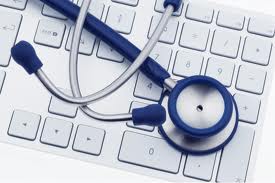 Health IT Enhances Patient Care, Reduces Costs
Health IT Enhances Patient Care, Reduces Costs
Verizon has released their list of 10 ways to enhance patient care and reduct costs through health information technology. Advances in health IT creates an opportunity to improve care, patient experience and outcomes. “This is an unprecedented time for transition in the health care ecosystem through the use of technology,” said Dr. Peter Tippett, chief medical officer and vice president of Verizon Connected Healthcare. “Advances in telemedicine, wireless networks, virtual care solutions, information exchanges and cloud computing are empowering health care providers to improve their business operations while giving them more time to provide quality care.”
Here are the 10 ways Verizon lists that offer the most promise. EHR technology is listed number 8.
1. Telemedicine Removes the Geographic Barriers to Quality Care – Through telemedicine, hospitals can reduce preventable hospitalizations, which amount to $31 billion in annual costs. Telemedicine also brings the promise of providing remote care for the aging population, and patients with chronic conditions and difficulties in traveling. This technology can deliver new service to previously unserved markets, helping improve care for those markets, and bring in new revenue for providers.
2. mHealth Takes Flexibility to the Next Level in Caring for Patients – The rise in mobile health applications for smart phones has fostered more than 10,000 health applications in the iTunes store alone. According to Research2Guidance, the world market for mHealth apps will reach more than $1.2 billion in 2012. Health care providers now can leverage many applications to help patients better manage chronic disease, weight loss and other conditions, and medication reminders and heart rate monitors.
3. Chronic Disease Is e-Manageable – Chronic disease accounts for 75 percent of every dollar spent on health care. At current growth rates, chronic disease spending, which is currently at $1.3 trillion, will more than double, to $2.2 trillion, by 2020. By leveraging Health IT, providers can help patients better manage their conditions from anywhere at any time. For example, 95 percent of diabetes care is done by the patient at home, work or on the go – not by a clinic. Empowering the patient can be replicated in other areas of chronic care by harnessing telemedicine and mHealth applications to help provide patients with remote support and disease management.
4. Wellness and Preventative Care Are Keystones of Health Education – Encouraging health and well-being will help reduce the 70 percent of deaths in the U.S. stemming from preventable diseases. Many diseases can be prevented through education, and health IT is the new gateway to help modify unhealthy behaviors. For example, smart apps can help patients manage their health and well-being in real time, providing alerts to take medications, exercise or follow a recommended diet.
5. Fraud Solutions Shift From ‘Chasing’ to ‘Prevention’ – Health care fraud, waste and abuse are estimated to cost the U.S. $226 billion annually. Medicare fraud alone is estimated to cost the government $70 billion annually. Changing from a “pay-and-chase-model” to an “identify-and-intervene” approach is the first step in trying to stop fraud. Today’s technology-driven solutions, such as Verizon’s fraud management solution, monitor health care claims to identify fraudulent patterns before claims are paid – not after, when it is much more difficult to recoup dollars.
6. Data Breach Awareness Pays Off – According to the “Verizon 2012 Data Breach Investigations Report,” data breaches in the health care and social assistance industry groups represented more than 7 percent of the total breaches Verizon analyzed in 2011. The protection of patient information could help save billions yearly for the health care industry. Many health care breaches stem from simple mistakes such as lost or stolen laptops containing patient data. This can be prevented in several ways, including encrypting all devices carrying sensitive information and securing the network.
7. Cloud Computing Gives Patient Information a Shot in the Arm – Verizon believes the cloud will impact health care industry in many forms. Well-established cloud service providers can help health care businesses reduce operational costs and improve sharing of patient electronic health records. Cloud service providers are able to offer cloud-based services for the health care industry to help monitor, analyze and react to real-time patient information.
8. Electronic Health Records Are the Building Blocks – Digitized patient data can help reduce duplicate tests, administrative inefficiency and redundant paperwork, which equate to some $120 billion in annual spending. According to Verizon’s Tippett, “Because of regulations, the health care sector is 10 years behind the financial services industry when it comes to utilizing IT. To reduce costs and improve care, exchanging patient information digitally – from payers and providers to pharma and patients – must be embraced.”
9. Big Data Yields New Way to Look at Science – The widespread adoption of health IT will bring a new era of science in harnessing “big data” to improve quality of care. This will help doctors tap a new science of health care by aggregating and analyzing large amounts of patient data on treatments, conditions and more.
10. Data Pool Integration Makes for a Healthy System – Removing the silos of patient information will help enable better communications. Utilizing a common platform can unite the pharmaceutical, physician, patient and provider for better information sharing. Creating a common data pool for these otherwise disenfranchised silos will transform the health care sector into a technology leader in storing, accessing and sharing critical information. This will ultimately help reduce redundant testing and paperwork and reduce the chance of medical errors.
